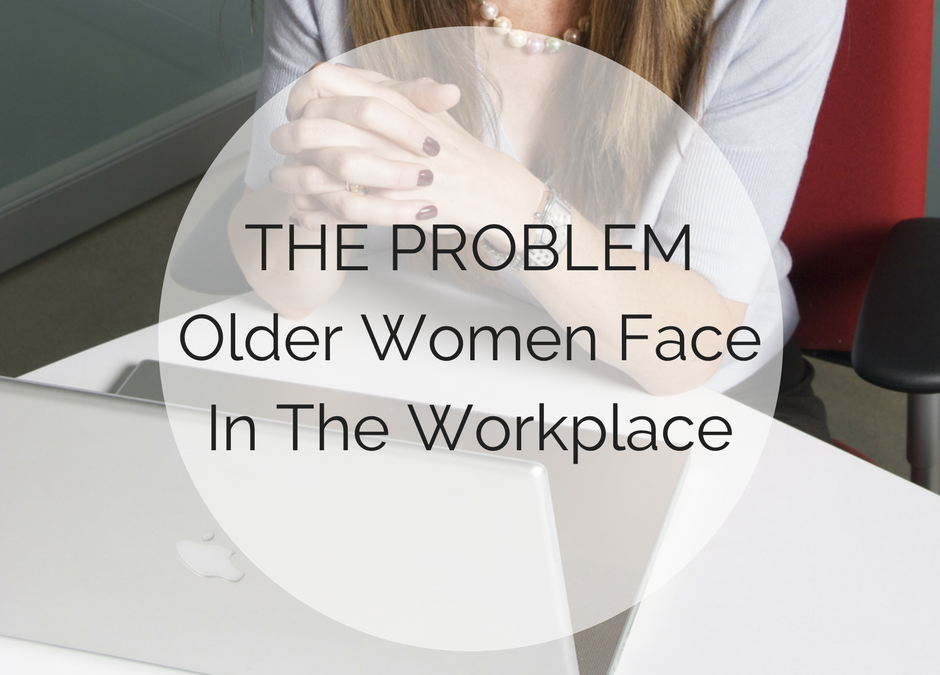The spotlight on women in the workplace seems to be brighter than ever these days. With female college graduates surpassing male graduates consistently for over 30 years, you would think that the trend would lead to an increase of women in leadership positions and the C-Suite.(1) Unfortunately, that isn’t the case According to a study by McKinsey and LeanIn.org, it would take another 100 years for men and women to be equally represented in the C-Suite.(2)
What’s keeping women from that corner office? It could be a case of gender discrimination, which we’ll explore in more detail below. But it may also be a problem that is compounded by age discrimination, too. We’ll examine some of the key points of both types of discrimination and then talk about ways in which older women in the workplace can feel empowered even when the cards seem stacked against us.
Age Discrimination Background
Age discrimination is blind. It doesn’t matter whether you’re a college graduate, in sales, or a clerical assistant. No matter your profession or educational background, the fact remains that older women are being unceremoniously phased out of the workplace.(3) However, that is never the “official” reason an employer gives.
It’s never the reason, because according to the Age Discrimination in Employment Act (ADEA) of 1967, employers are forbidden by law to discriminate employment for people 40 years or older. When it was signed into law by President Johnson, the ADEA hoped to protect older employees from:
- Being discriminated against in hiring, promotions, wages/earnings, termination, and downsizing;
- Job descriptions stating age requirements;
- Losing benefits due to age;
- Enforcement of mandatory retirement (based on a 1986 amendment)(4)
And while this law is designed for men and women alike, women face a more difficult path to equality in the workplace than men, despite the well-intentioned law.
Women in the Workplace
If more women have been graduating with college degrees than men over the past 30 years, wouldn’t it seem logical that there would be more women in leadership and C-Suite roles today? Logically, yes. Unfortunately, there are still significant hurdles facing women as they work, just as there have been for generations of women before them.
One thing that continues to play a role, though a much more subtle one, in halting a woman’s career advancement is the prospect that she could become pregnant or actually becoming pregnant. Despite the Pregnancy Discrimination Act (PDA) of 1974, which amended the Civil Rights Act to protect sex discrimination based on pregnancy, qualified women are still passed over for less qualified, often younger, men.(5)
Age and Gender Discrimination Against women
When taken together, age discrimination and gender discrimination against women in the workplace means that women are constantly fighting an uphill battle for equality in the workplace.
According to a recent study by the National Bureau of Economic Research, researchers came to one possible conclusion that the reason for age and gender discrimination for women is that “age discrimination laws do not deal effectively with the situation of older women who face both age and gender bias.”(67) In other words, the existing laws may be too loosely defined. As a result, older women are still discriminated against, often more so than their older male counterparts.
What’s a Woman to Do?
While age and gender discrimination still exists in the modern workplace, women will continue to break the glass ceiling and fight for equal status and equal pay.
However, if the current trend continues and it could take 100 years for women to catch up with men, it’s easy to see why so many women are choosing to own their own businesses – and control their own destiny.
Owning your own business (franchise or not) is one way in which you can focus on building your business and not worry about getting passed over for that next promotion. In fact, according to the National Association of Women Business Owners, over 9 million firms are female-owned, which accounts for approximately 31% of all privately held firms.(8)
2017 was a breakthrough year for female entrepreneurs: according to a study funded by American Express, over the past 20 years, female-owned businesses increased 114% with revenue growth of 103%. In addition to this monumental growth, female-owned businesses employ “nearly 9 million people and generate more than $1.7 trillion in revenue.”(9)
Whether you’re looking for a change or are considering embarking on a new career, franchising may be the answer you’re looking for. Franchising is lower risk than starting your own thing, generally there is a proven concept (that you can validate by speaking with other franchisees) and all of the marketing, technology and training is already in place.
I have seen amazingly talented women explore franchising and succeed. While franchising isn’t for everyone, if you’re motivated and ready to make a big change in your career, reach out to Your Franchise is Waiting to learn more.
[Sources]
(1) https://www.mckinsey.com/global-themes/gender-equality/women-in-the-workplace-2017
(2) https://www.mckinsey.com/global-themes/gender-equality/whats-stalling-progress-for-women-at-work
(3) https://hbr.org/2016/03/older-women-are-being-forced-out-of-the-workforce
(4) https://www.eeoc.gov/laws/statutes/adea.cfm
(5) https://www.eeoc.gov/laws/statutes/pregnancy.cfm
(6) http://www.nber.org/papers/w21669
(7) https://hbr.org/2016/03/older-women-are-being-forced-out-of-the-workforce
(8) https://www.nawbo.org/resources/women-business-owner-statistics
(9) http://about.americanexpress.com/news/pr/2017/state-of-women-owned-businesses-2017-report.aspx


